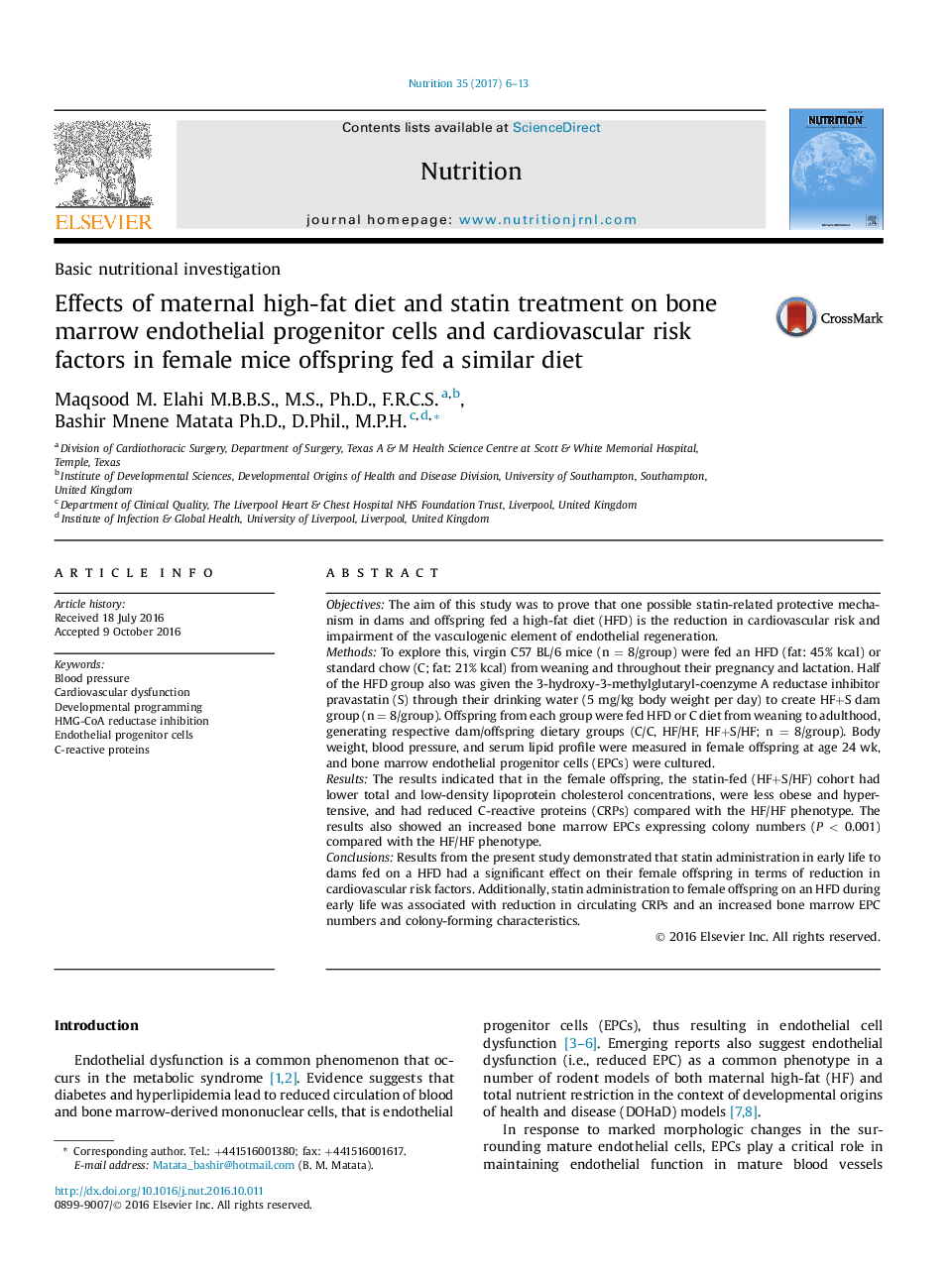| Article ID | Journal | Published Year | Pages | File Type |
|---|---|---|---|---|
| 5657012 | Nutrition | 2017 | 8 Pages |
â¢The findings from this study of maternal diet as a possible contributor to the origin of adverse cardiovascular effects in the offspring may in part be mediated by C-reactive protein (CRP) that would negatively impact on the levels of bone marrow derived endothelial progenitor cell (EPC) expression in the circulation.â¢Pravastatin treatment of these dams improves the number of circulating EPCs and reduces CRP levels in the offspring and may prevent the risk of later cardiovascular pathophysiology.â¢The ability of maternal hypercholesterolemia to reduce EPC numbers may represent an important mechanism in the developmental origins of cardiovascular disease. Studies of this design are likely to be valuable in the development of suitable interventions in human populations.
ObjectivesThe aim of this study was to prove that one possible statin-related protective mechanism in dams and offspring fed a high-fat diet (HFD) is the reduction in cardiovascular risk and impairment of the vasculogenic element of endothelial regeneration.MethodsTo explore this, virgin C57 BL/6 mice (n = 8/group) were fed an HFD (fat: 45% kcal) or standard chow (C; fat: 21% kcal) from weaning and throughout their pregnancy and lactation. Half of the HFD group also was given the 3-hydroxy-3-methylglutaryl-coenzyme A reductase inhibitor pravastatin (S) through their drinking water (5 mg/kg body weight per day) to create HF+S dam group (n = 8/group). Offspring from each group were fed HFD or C diet from weaning to adulthood, generating respective dam/offspring dietary groups (C/C, HF/HF, HF+S/HF; n = 8/group). Body weight, blood pressure, and serum lipid profile were measured in female offspring at age 24 wk, and bone marrow endothelial progenitor cells (EPCs) were cultured.ResultsThe results indicated that in the female offspring, the statin-fed (HF+S/HF) cohort had lower total and low-density lipoprotein cholesterol concentrations, were less obese and hypertensive, and had reduced C-reactive proteins (CRPs) compared with the HF/HF phenotype. The results also showed an increased bone marrow EPCs expressing colony numbers (P < 0.001) compared with the HF/HF phenotype.ConclusionsResults from the present study demonstrated that statin administration in early life to dams fed on a HFD had a significant effect on their female offspring in terms of reduction in cardiovascular risk factors. Additionally, statin administration to female offspring on an HFD during early life was associated with reduction in circulating CRPs and an increased bone marrow EPC numbers and colony-forming characteristics.
Graphical abstractDownload high-res image (99KB)Download full-size image
